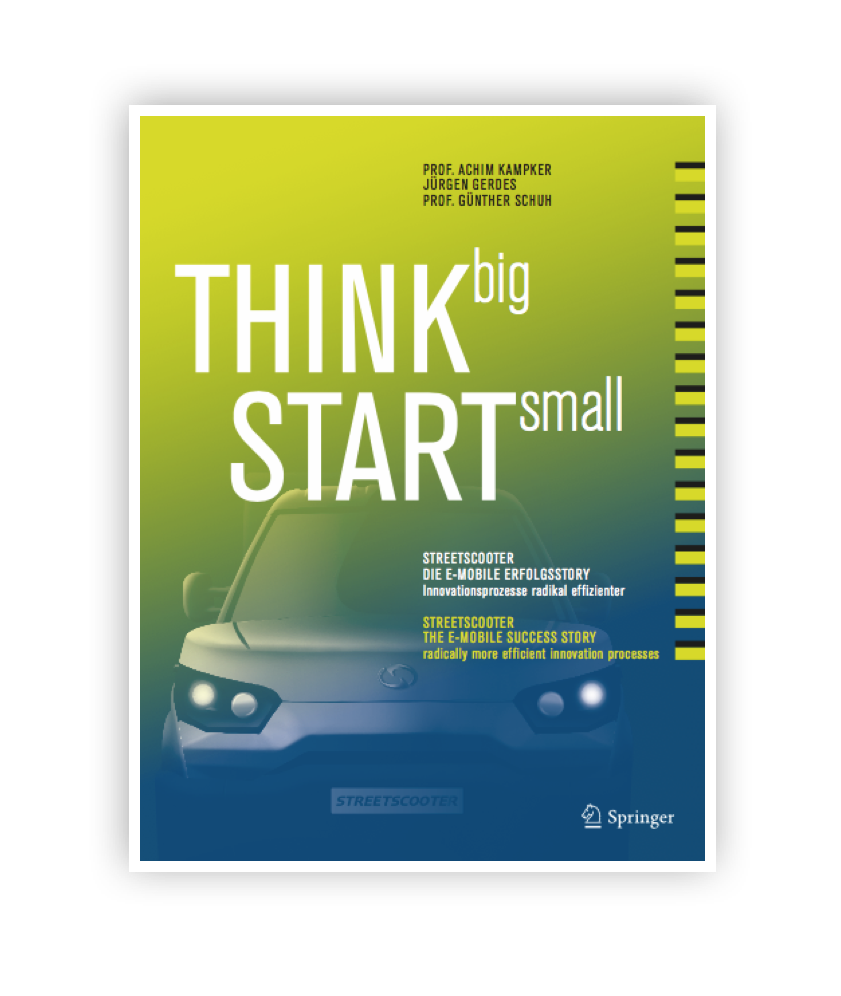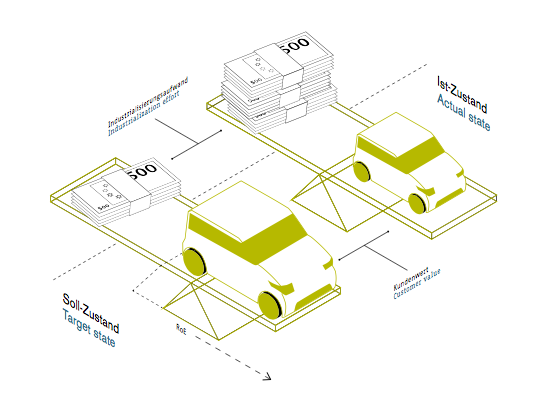
Think Big, Start Small: Did you really think big when you approached the StreetScooter project?
Prof. Schuh: We launched an unusual process for how to approach vehicle development.
But since then, the StreetScooter has become something of a big thing, hasn’t it?
The Tesla story is a kind of Think Big story. Strictly speaking, Elon Musk [founder of Tesla] also
started small, simply saying: I’ll take a finished car, the Lotus say, and mount a relatively simple
engine into it over finished battery cells. And then he makes a car, and to his own surprise finds that in spite of his model, the industry hardly takes any notice. But the big picture he nevertheless had in view right from the outset, we didn’t have, because the Think Big story is always a story about funding. Big and Small is not so critical for me. Think and Start is much more important.
But at the end of the day, there’s still something Big that came out of it. This may not have been part of the vision. Does that irk you?
I have nothing against it, but now you do need to reiterate that by Big, the public tends to understand things like Tesla. Musk had a very big picture of where he really wanted to go: I simply want to be the leading ecological mobility provider. A visionary Musk story hasn’t worried us in the least. What does it for us is actually something different, and it’s this: If you take a closer look at technology, especially at the possible production technologies, we have shown how to abruptly and substantially reduce the market entry barriers to external third parties – i.e., newcomers.”
So, that’s what you mean by a closer look?
Actually there are four insurmountable obstacles for a newcomer to the automotive industry.
The barrier to entry is so great because first off, you need a brand, second a distribution channel, third, a self-supporting body structure, and fourth, a high-tech powertrain unit. In particular, the self-supporting body structure is extremelytool-intensive and capital-intensive in the finishing and the coating process. Technologically, an OEM5 can do that; they can do the chassis and the powertrain. But if you look into it a bit, what’s relevant for an electric vehicle – the hard part – is the battery, and right now there’s no dominant design, so none of the potential suppliers is in a pole position. Just like with engines, nobody’s going to be
producing their own batteries. Elon Musk is in the same situation, but only temporarily. If you take a bit of a closer look into the topic of “self-supporting body structure”, as you screen through the technological possibilities, you come to an interesting conclusion: Whoops! The tried and true concept of a self-supporting body is no longer necessary in an electric car. If I do it differently, I actually gain a certain degree of freedom, I gain different effects at a smaller production quantity. And I can even derive a few technical advantages from it too. That was exactly how it was in the crucial phase, when we designed the first StreetScooter vehicle.
